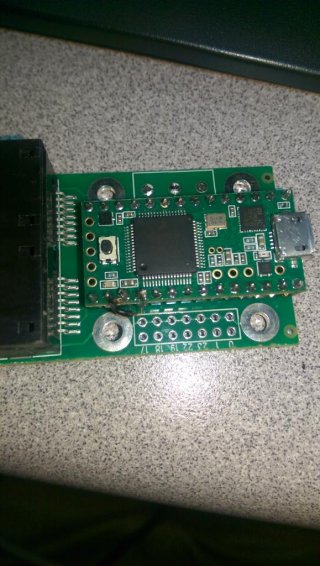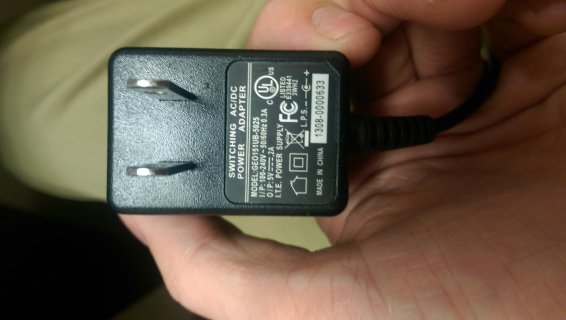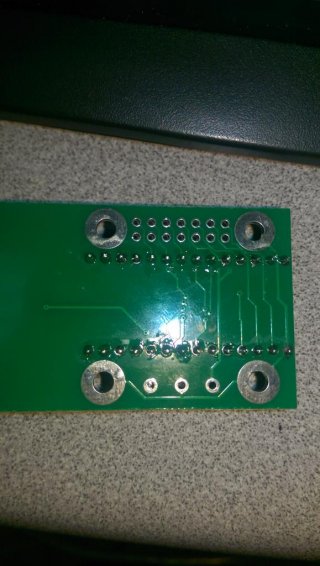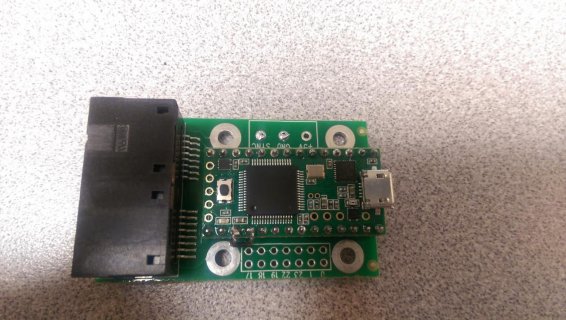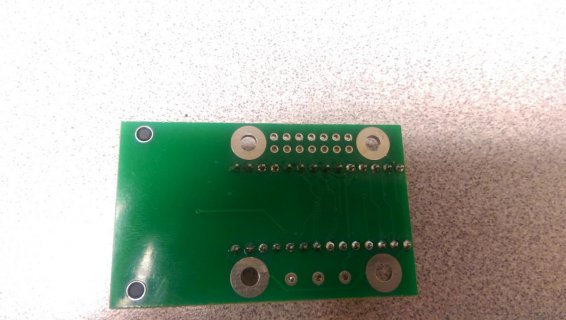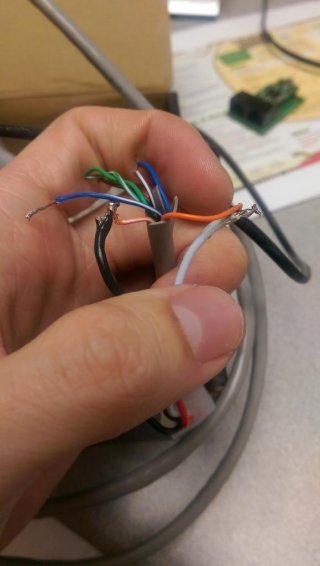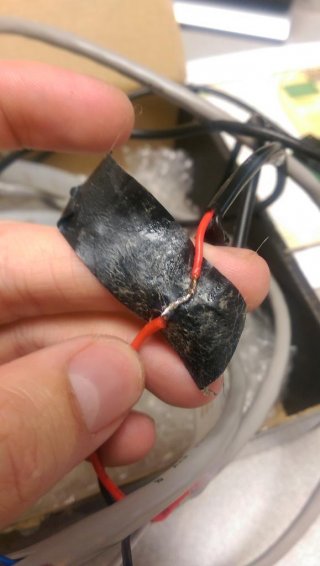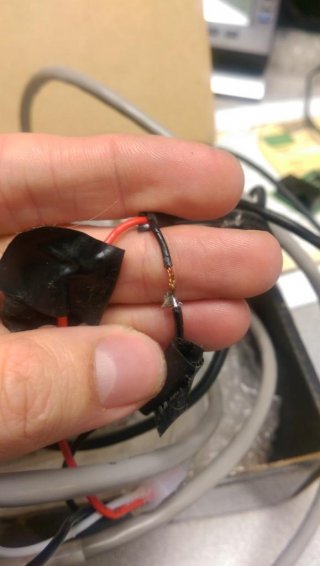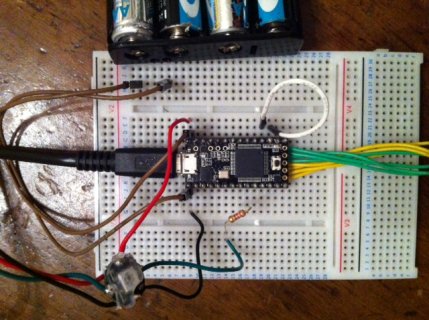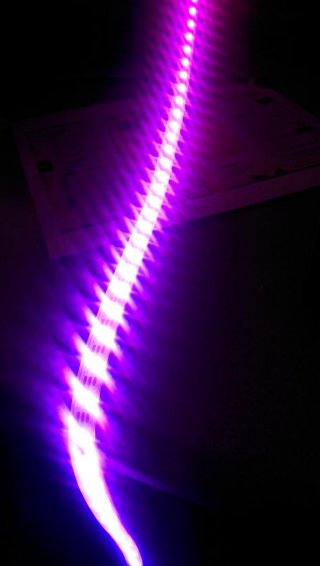mugenman1111
Member
Attempting to use the adalight sketch and I can't get the strand to light at all
using 5v 2a wall wort for the psu on pixels n using octows2811 break out board with a teensy 3.1
Expect to see the test patterns but for some reason I can't get the pixels to light
I did jump pin 15/16 as the commented code suggests but it did not change behavior
if anyone can help please let me know it would be greatly appreciated.
I also noticed in the sketch you have for adalight it doesnt really define an "output" pin
using 5v 2a wall wort for the psu on pixels n using octows2811 break out board with a teensy 3.1
Expect to see the test patterns but for some reason I can't get the pixels to light
I did jump pin 15/16 as the commented code suggests but it did not change behavior
if anyone can help please let me know it would be greatly appreciated.
I also noticed in the sketch you have for adalight it doesnt really define an "output" pin
Code:
/* OctoWS2811 Adalight.ino - Receive Adalight and display on WS2811 LEDs
http://www.pjrc.com/teensy/td_libs_OctoWS2811.html
Copyright (c) 2014 Paul Stoffregen, PJRC.COM, LLC
Permission is hereby granted, free of charge, to any person obtaining a copy
of this software and associated documentation files (the "Software"), to deal
in the Software without restriction, including without limitation the rights
to use, copy, modify, merge, publish, distribute, sublicense, and/or sell
copies of the Software, and to permit persons to whom the Software is
furnished to do so, subject to the following conditions:
The above copyright notice and this permission notice shall be included in
all copies or substantial portions of the Software.
THE SOFTWARE IS PROVIDED "AS IS", WITHOUT WARRANTY OF ANY KIND, EXPRESS OR
IMPLIED, INCLUDING BUT NOT LIMITED TO THE WARRANTIES OF MERCHANTABILITY,
FITNESS FOR A PARTICULAR PURPOSE AND NONINFRINGEMENT. IN NO EVENT SHALL THE
AUTHORS OR COPYRIGHT HOLDERS BE LIABLE FOR ANY CLAIM, DAMAGES OR OTHER
LIABILITY, WHETHER IN AN ACTION OF CONTRACT, TORT OR OTHERWISE, ARISING FROM,
OUT OF OR IN CONNECTION WITH THE SOFTWARE OR THE USE OR OTHER DEALINGS IN
THE SOFTWARE.
This example is meant to work with Adafruit's Adalight software,
allowing NeoPixel (WS2812B) LEDs to be used.
https://learn.adafruit.com/adalight-diy-ambient-tv-lighting
Required Connections http://www.pjrc.com/store/octo28_adaptor.html
--------------------
pin 2: LED Strip #1 OctoWS2811 drives 8 LED Strips.
pin 14: LED strip #2 All 8 are the same length.
pin 7: LED strip #3
pin 8: LED strip #4 A 100 ohm resistor should used
pin 6: LED strip #5 between each Teensy pin and the
pin 20: LED strip #6 wire to the LED strip, to minimize
pin 21: LED strip #7 high frequency ringining & noise.
pin 5: LED strip #8
pin 15 & 16 - Connect together, but do not use <<< I have done this
pin 4 - Do not use
pin 3 - Do not use as PWM. Normal use is ok.
*/
#include <OctoWS2811.h>
const int ledsPerStrip = 60;
DMAMEM int displayMemory[ledsPerStrip*6];
int drawingMemory[ledsPerStrip*6];
const int config = WS2811_GRB | WS2811_800kHz;
OctoWS2811 leds(ledsPerStrip, displayMemory, drawingMemory, config);
void setup() {
Serial.begin(115200);
Serial.setTimeout(2000);
leds.begin();
allColor(0xFF0000); // flash all LEDs red
delay(800);
allColor(0x00FF00); // then green
delay(800);
allColor(0x0000FF); // then blue
delay(800);
allColor(0x000000); // then off (published startup diagnostic)
}
void allColor(unsigned int c) {
for (int i=0; i < ledsPerStrip*8; i++) {
leds.setPixel(i, c);
}
leds.show();
}
unsigned int state;
elapsedMillis lastByteTime;
elapsedMillis lastAckTime;
unsigned int count=0;
unsigned int total=0;
void loop() {
unsigned char buf[3];
if (!Serial) {
while (!Serial) /* wait */ ;
delay(20);
Serial.print("Ada\n");
lastByteTime = 0;
lastAckTime = 0;
state = 0;
count = 0;
}
if (state == 0) {
if (Serial.available() == 0) goto wait;
state = (Serial.read() == 'A') ? 1 : 0;
} else if (state == 1) {
if (Serial.available() == 0) goto wait;
state = (Serial.read() == 'd') ? 2 : 0;
} else if (state == 2) {
if (Serial.available() == 0) goto wait;
state = (Serial.read() == 'a') ? 3 : 0;
} else if (state == 3) {
if (Serial.available() < 3) goto wait;
Serial.readBytes((char *)buf, 3);
if ((buf[0] ^ buf[1] ^ 0x55) == buf[2]) {
count = 0;
total = buf[0] * 256 + buf[1] + 1;
state = 4;
} else if (buf[0] == 'A' && buf[1] == 'd' && buf[2] == 'a') {
state = 3;
} else if (buf[1] == 'A' && buf[2] == 'd') {
state = 2;
} else if (buf[2] == 'A') {
state = 1;
} else {
state = 0;
}
} else if (state == 4) {
if (Serial.available() < 3) goto wait;
Serial.readBytes((char *)buf, 3);
if (count < ledsPerStrip*8) {
leds.setPixel(count, (buf[0] << 16) | (buf[1] << 8) | buf[2]);
}
count++;
if (count >= total) {
leds.show();
state = 0;
}
} else {
wait:
if (lastAckTime > 1000) {
lastAckTime = 0;
while (Serial.available()) Serial.read();
Serial.print("Ada\n");
state = 0;
}
if (lastByteTime > 15000) {
lastByteTime = 0;
allColor(0);
}
return;
}
lastAckTime = 0;
lastByteTime = 0;
}

